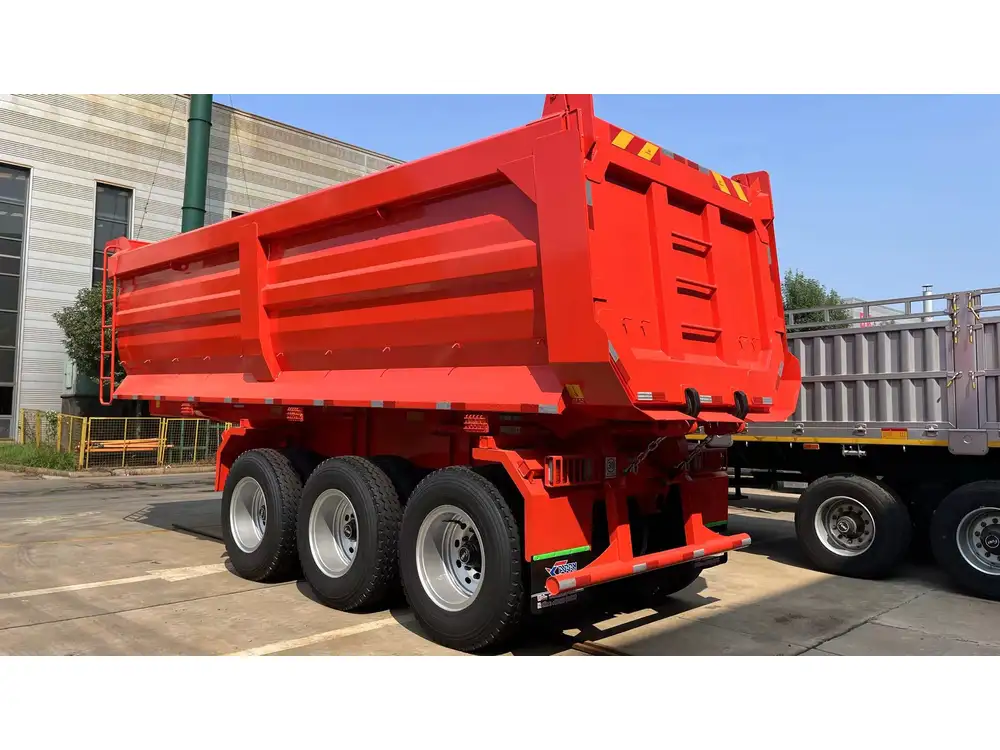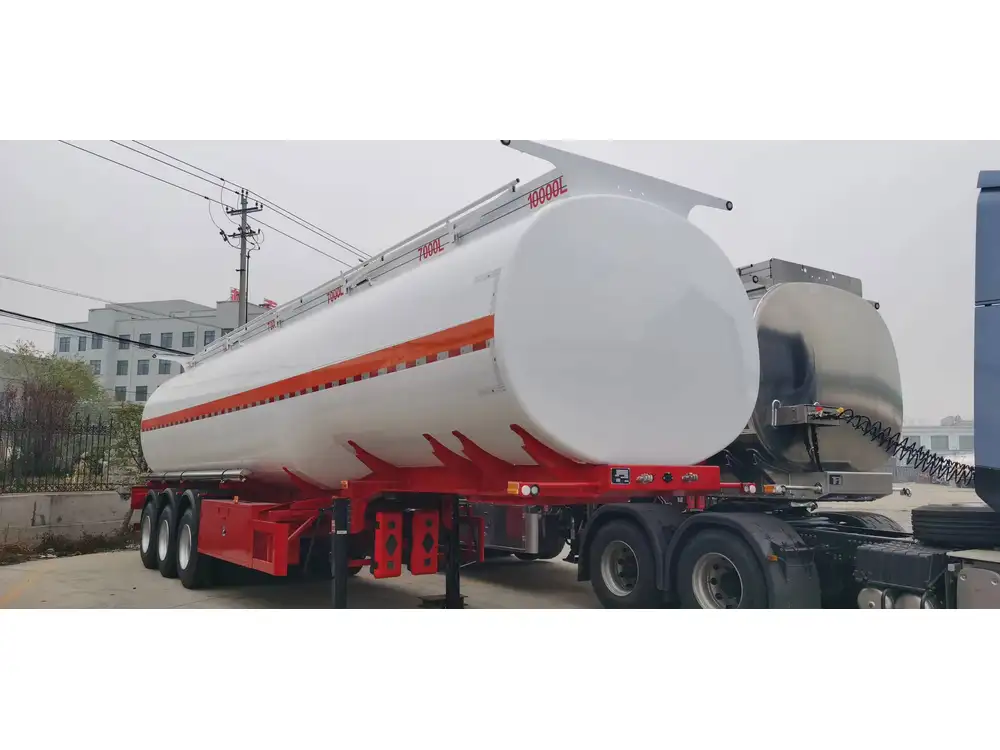When considering the safety, reliability, and overall performance of semi-trailer tires, understanding the minimum tread depth required is essential for fleet operators, drivers, and maintenance teams alike. Tire tread not only provides traction but also plays a critical role in fuel efficiency and water displacement, significantly affecting vehicle handling, performance, and stopping distance.
Understanding Tread Depth
What is Tread Depth?
Tread depth refers to the vertical measurement between the top of the tread rubber to the bottom of the tire’s grooves. This measurement is crucial in determining how well the tire can grip the road, especially in adverse weather conditions.

Why Does Tread Depth Matter?
- Traction: Adequate tread depth ensures optimal grip on various surfaces, preventing slip and ensuring safe handling.
- Hydroplaning Resistance: Sufficient grooves help channel water away from the tire, reducing the risk of hydroplaning in wet conditions.
- Fuel Efficiency: Tires with less tread may consume more fuel due to increased rolling resistance.
- Legal Compliance: Many jurisdictions impose legal minimum tread depths, making adherence not just a safety matter but a regulatory requirement.
Methods to Measure Tread Depth
Tread depth can be measured using various methods:
- Tread Depth Gauge: Simple tools designed specifically to measure the depth of tire grooves accurately.
- Penny Test: An informal method using a penny; a portion of Lincoln’s head should be covered by the tread for acceptable depth.
- Visual Inspection: Regular monitoring for indicators like wear bars that reflect insufficient tread depth.
Minimum Tread Depth Requirements

General Guidelines
The Federal Motor Carrier Safety Administration (FMCSA) sets specific regulations concerning tire tread depth for commercial vehicles including semi-trailers. The minimum tread depth is generally established as follows:
- Drive Axle Tires: A minimum of 4/32 of an inch.
- Steering Axle Tires: A minimum of 4/32 of an inch.
- Trailer Axles: Minimum tread depth of 2/32 of an inch.
Comparing Tread Depth Standards
| Tire Type | Minimum Required Tread Depth | Common Issues with Insufficient Depth |
|---|---|---|
| Normal Trailers | 2/32 inch | Increased risk of hydroplaning; poor traction |
| Drive Tires | 4/32 inch | Loss of control; longer stopping distances |
| Steering Tires | 4/32 inch | Impaired maneuverability, increased wear |
Adhering to these minimum standards is not only advisable but also legally mandated in many jurisdictions, making awareness and compliance essential for any fleet operation.
Consequences of Ignoring Tread Depth
Failing to maintain the minimum tread depth can lead to various ramifications:
- Safety Risks: Tires with insufficient tread depth can drastically increase the likelihood of accidents, especially in inclement weather.
- Increased Operational Costs: Poor tire conditions lead to higher maintenance and repair costs, as well as increased fuel consumption.
- Legal Penalties: Operating vehicles with tires below the legal tread depth can result in fines for fleet operators and damage to reputation.
- Insurance Implications: Neglecting tire maintenance might affect insurance claims in the event of an accident.

How to Maintain Tire Tread Depth
Regular Inspections
Conducting routine tire inspections and maintenance can prolong the life of tires and maintain appropriate tread depth. Best practices include:
- Inspecting tires for uneven wear patterns that may signify misalignment or improper inflation.
- Monitoring tread depth at uniform intervals.
- Rotating tires regularly to promote even tire wear.
Proper Inflation
Maintaining correct tire pressure is essential for tire longevity. Under-inflated tires can reduce tread depth faster, while over-inflation can lead to uneven wear and an increased risk of blowouts.
| Inflation Status | Impact on Tread Wear |
|---|---|
| Under-Inflated | Faster wear on the outer edges, leading to increased depth depletion. |
| Over-Inflated | Increased wear at the center of the tread, impacting grip. |
| Properly Inflated | Even wear across the tread, prolonging life. |

Load Management
Ensuring that semi-trailer loads do not exceed the manufacturer’s specifications is vital. Overloading tires strains their structure, causing uneven wear and quicker loss of tread.
Understanding Tread Wear Patterns
Recognizing various tread wear patterns can be indicative of tire health and performance issues:
- Center Wear: Often due to over-inflation, this pattern shows that the tire is bulging in the middle, leading to rapid tread loss in that area.
- Edge Wear: Resulting from under-inflation and misalignment, this pattern features worn-down edges while the center remains intact.
- Cupping or Scalloping: A sign of suspension issues, this wear pattern features high and low areas across the tread surface.
Frequently Asked Questions

How Often Should Tread Depth be Checked?
Regular checks every month and before long trips are advisable. Tire depth gauges can be used conveniently during routine vehicle inspections to ensure ongoing compliance with minimum requirements.
Can I Replace Just One Tire on a Semi-Trailer?
While it’s possible to replace just one tire, it’s recommended to replace tires in pairs (especially on the same axle) to maintain balance and predictable handling.
What Tires Offer Better Tread Life for Semi-Trailers?
Selecting tires that have been rated for longevity and fuel efficiency, such as those with specific tread patterns designed for wear resistance, can dramatically extend the lifespan of your tires.

Conclusion
Ensuring comfortable and safe journeys for both drivers and cargo carriers begins at the contact point between the vehicle and the road: the tires. By understanding the minimum tread depth requirements and methods for maintaining tire health, fleet operators can enhance safety, save costs, and ensure compliance with regulations.
Remember: Regular tire inspections, proper inflation, and load management are not just recommendations; they are essential practices for maintaining the integrity of semi-trailer tires. By prioritizing tread depth, operators can ensure safer operations and extend the life of their tires.
Investing in quality tires and keeping them in optimal condition serves as a cornerstone of effective fleet management, significantly contributing to the overall efficiency of any transportation operation.
This comprehensive exploration into minimum tread depth requirements for semi-trailer tires reflects an understanding of user intent, drawing attention to both informative content and actionable insights designed to facilitate effective decision-making in tire maintenance and compliance.



